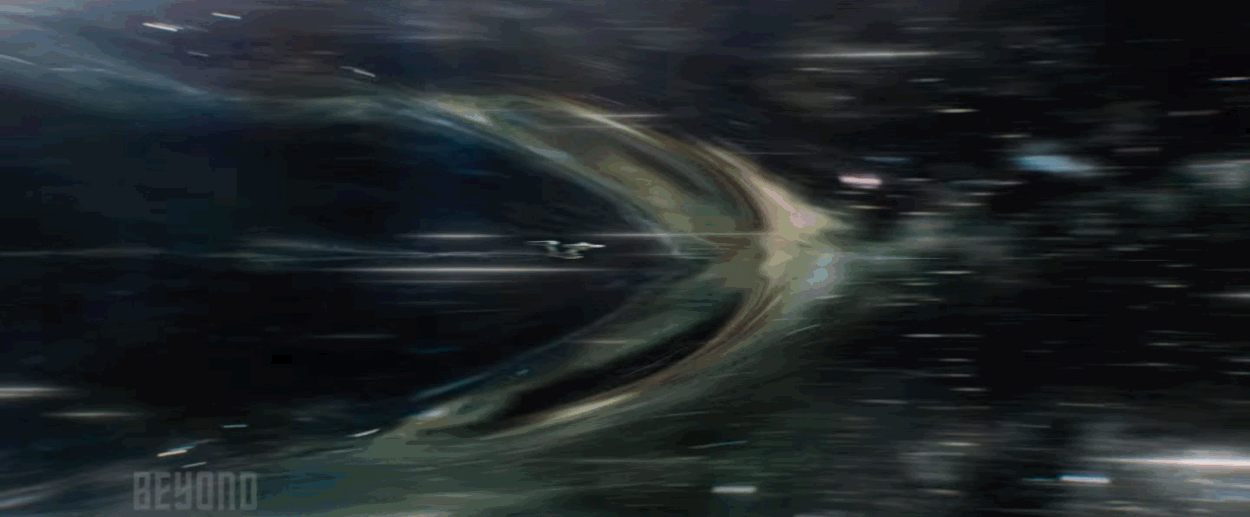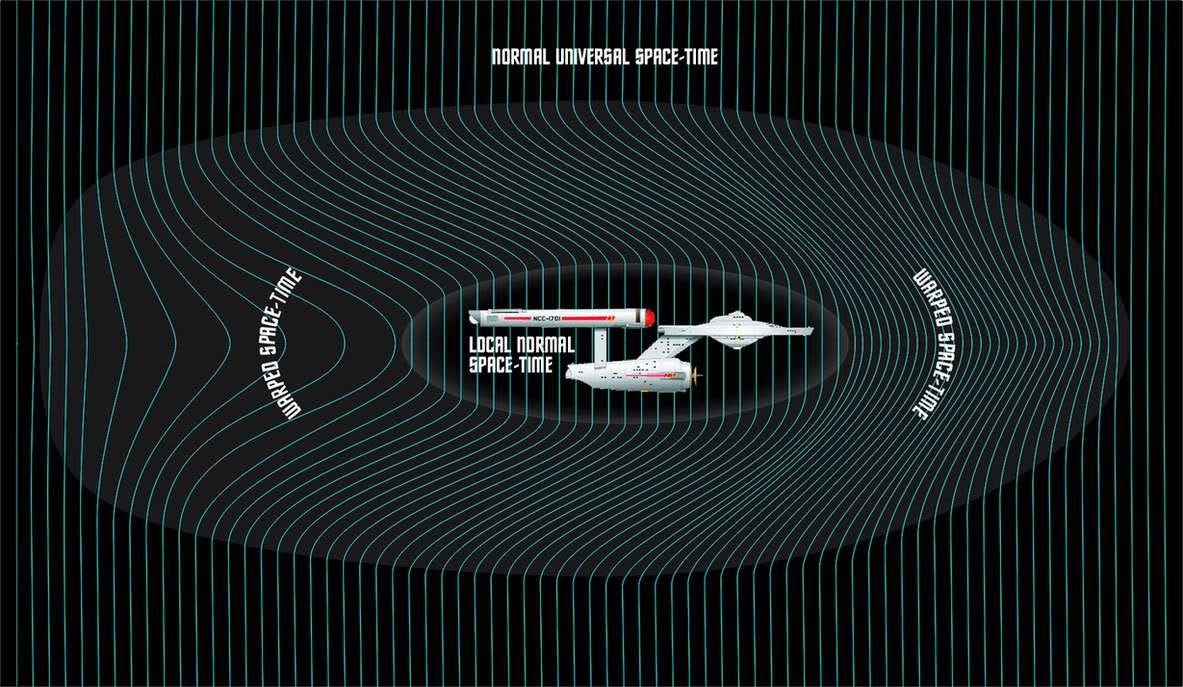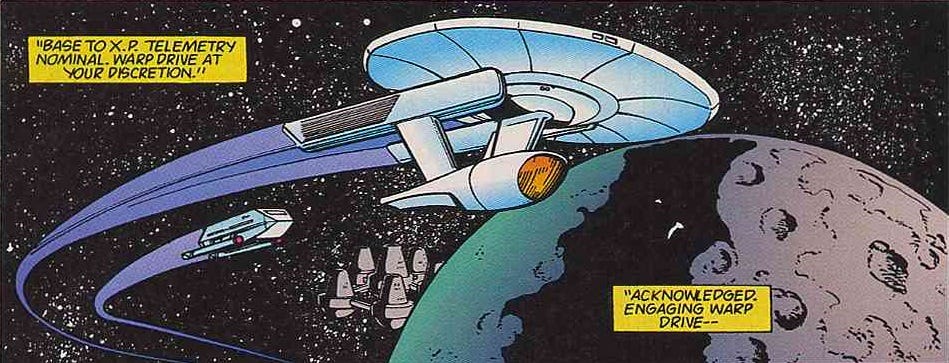Constructing an Alcubierre Warp Drive
We see them all the time in the best science fiction stories — ships with warp drives that make it possible for the characters to explore new planets and new galaxies. These crafts would go even faster than the speed of light except, if general relativity taught us anything, it’s that nothing can exceed the speed of light. Right? After all, light has no mass and thus it can move at 299,792,458 meters per second.
Well, that’s true. Nothing can exceed that universal speed limit. Except it’s still possible to construct a warp drive without breaking any laws of physics.
In 1994, Mexican theoretical physicist Miguel Alcubierre wrote a paper laying the mathematical and scientific foundation for a real life warp drive that wouldn’t interfere with general relativity. He became interested in this method of interstellar travel after seeing it used in science fiction stories to travel across vast distances.

How a warp drive works is by expanding and contracting the fabric of spacetime around a ship and its bubble. The ship never accelerates or moves, it is the fabric around it that moves and pushes it forward. Imagine, as an analogy, standing on a conveyer belt where you never actually have to walk. Instead, the fabric of the belt itself is what’s propelling you forward. The contraction of the spacetime in front of the ship will pull it towards that point while the expansion behind it will continue this forward motion. Einstein showed that spacetime can be bent by mass or energy, and if spacetime can be bent then it can be manipulated in other ways. The reason this ship would be able to move faster than the speed of light is because general relativity tells us that nothing within space can break the speed limit, however, there is no speed limit on how fast space itself can contract or expand. We’re not moving a thing within space — we’re moving space itself.


Alcubierre’s work was hopeful and impressive but it had a lot of holes as well. In his original paper he theorized that to power such a spacecraft we would need more negative energy than there is energy in the entire universe. This negative energy is what causes space to expand. The problem is that negative energy is elusive and many scientists even doubt its existence, much less having hope we can make enormous amounts of it.
What we have observed of what could be negative energy has been very small. The idea is that what appears to be black, empty space is really not. There’s an energy density of empty space — what we refer to as the zero point energy. Quantum mechanics tells us that empty space is filled with particles of energy popping in and out of existence. If we can stop these particles from appearing, we’ll have negative energy.
Scientists have tried to create this in a lab by pushing two metal plates together (the plates are so flat that they’re perfectly smooth almost down to an atomic level) even closer than the width of a human hair. That space is so small that it wouldn’t allow the particles to exist, causing the force around the plates to increase and thus bearing the signature of negative energy. What has been observed of this phenomenon is not much, only a measurement too small to be conclusive.
If we do figure out how to create more negative energy in the future, we may not need as much of it as Alcubierre first theorized. Later refinements to his paper by NASA scientists drastically reduced the amount of energy the warp drive would need by oscillating parts of the craft at high frequencies, making it easier to move through spacetime and lessening the amount of energy required. Modern theories on how much negative energy we’d need range from 65 exajoules to the energy of a few negative and positive solar masses. 65 exajoules is around the amount of energy the US uses in one year. Still a lot, but definitely an improvement and definitely doable. If we could utilize dark energy, we’d only need about the mass of Jupiter. The only problem is we don’t understand much if anything about what dark energy is or how it works. It might end up being the exotic material we need.
By comparison, attempting interstellar space travel with conventional rockets would not only take hundreds of thousands of years but would require a tank larger than the entire universe. Not to mention finding a material that could withstand that length of travel.


Some models of the spacecraft have it moving at 10 times the speed of light, making a trip to our nearest exoplanet, Alpha Centauri Bb, a matter of six months even though it’s over 4 light years away. Our fastest crafts now can go at 20,000 miles per hour, meaning that it would take us 142,000 years to reach Alpha Centauri Bb, and a return trip from there is even more unlikely. 20,000 miles per hour is 0.003% the speed of light.
Traveling so fast would take us through higher dimensions, meaning that it’s also possible that warp drives could give us a way not only to explore our own universe, but the multiverse as well. There is a limit to how fast a warp drive could theoretically go, but even those speed limits would let us arrive at a new galaxy in a fraction of a fraction of a second. As an added advantage, the ship could speed up and slow down and passengers wouldn’t experience time dilation. In other words, you wouldn’t arrive at your destination to find out that you’re so far ahead in time that everyone you know is dead back on Earth.
Other problems besides energy sources also include particles accumulated during travel that may inadvertently get launched during deceleration and destroy entire worlds. In fact, there may be no way to decelerate once the craft starts moving and the crew may end up dead for any number of reasons. But so far all the math and experimental data has shown warp drives as a possibility.
If we do find a way to create the tech, it’ll be centuries before we see it put to use. Like wormholes, the possibilities warp drives would provide are enormous but they won’t come easy.
We won’t have to wait hundreds of years to begin exploring the far reaches of space, however; NASA has a goal of making an interstellar craft before the year 2100.
